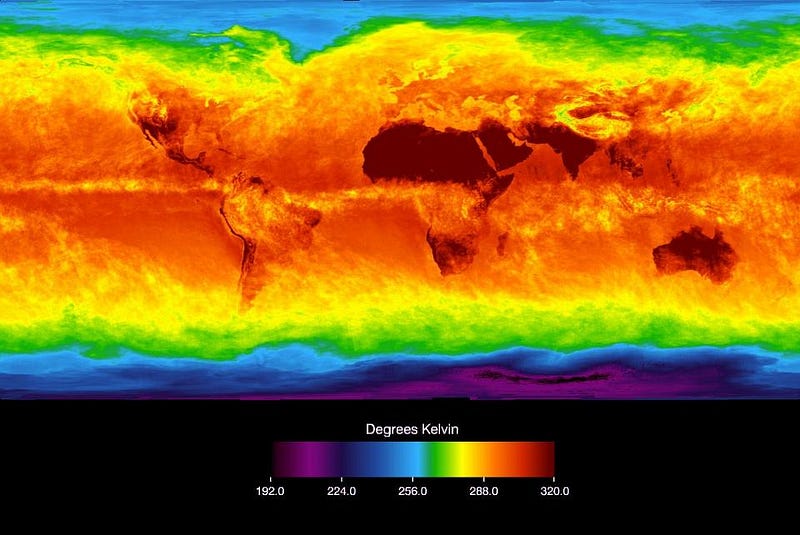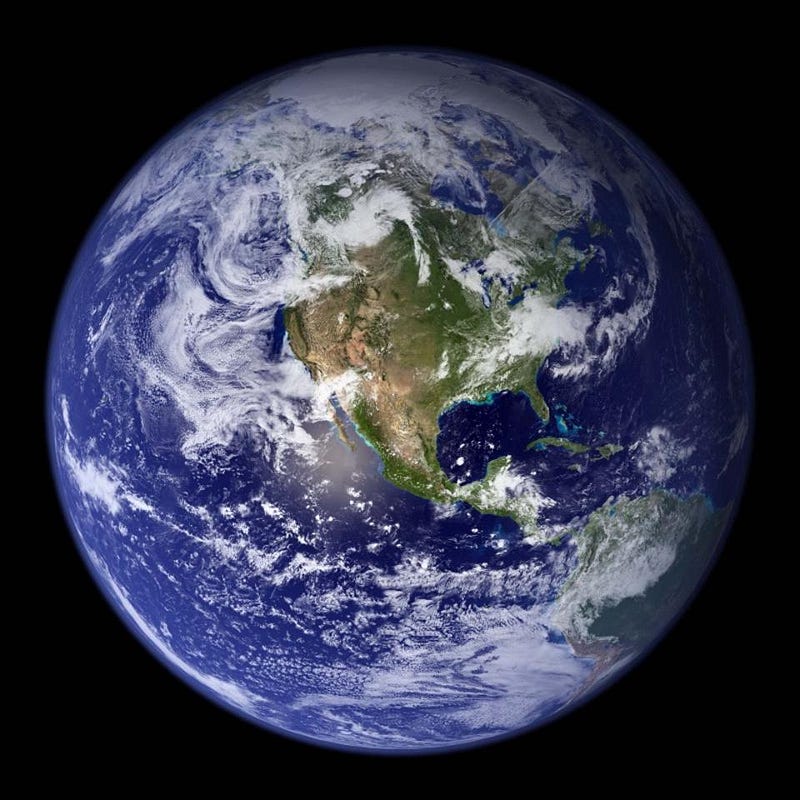There’s no science behind denying climate change

Even if you have a problem with the messenger, you still need to heed the message.
“Whether humans are responsible for the bulk of climate change is going to be left to the scientists, but it’s all of our responsibility to leave this planet in better shape for the future generations than we found it.” –Mike Huckabee
If you didn’t know anything about climate science, about the Earth’s temperature, about carbon dioxide or greenhouse gases, but you wanted to, how would you go about doing it? You’d begin by constructing a plan for how you’d accurately scientifically investigate the problem. You’d think about the data you’d need to collect and how you’d gather it. You’d think about the measurements you’d want to make and how to make them. You’d think about the sources of error and how to account for them: how to properly calibrate your data from all over the world and from many different time periods. And then you’d bring it together, under one enormous framework, to try and draw a scientifically robust conclusion.

Your first step would be to go out and try to measure the heat content of the planet. You’d measure the temperature of the air where you are, and you’d attempt to do it all over the world. The continents would be the easiest, and then you’d go after the oceans. The sea-level temperature would be low-hanging fruit, and then you’d have to go beyond the obvious to measure the heat trapped in the upper atmosphere and in the deeper waters of the seas. You’d try and measure it everywhere today, but also to reconstruct what it was in the past, going as far back as you can.

Because you can’t go back in time and take measurements that you weren’t there to take, you’d then look for proxies, or things you can measure directly that can give you information about past temperature. You’d discover that the science of dendroclimatology — or inferring past climates and temperatures from the properties of trees that were growing at the time — can give you lots of robust information. The width of the rings and the maximum density of the wood formed late in the season are the best annual indicators, and can allow you to reconstruct surface temperatures going back thousands of years.

You’d then look to measure the atmospheric concentration of all the different gases present. Oxygen, nitrogen, argon, water vapor, carbon dioxide, methane, and so on. These gases all have different absorption and emission properties from one another, and hence, different heat-trapping properties. If the Earth had no atmosphere at all, it would be 33 °C (59 °F) colder, on average, than it is today. The thermodynamic properties of our atmosphere are what make our planet habitable, but changing the conditions or concentrations of these gases do more than change that one component.

You’d find, if you studied it, that as the atmospheric contents change, so do both the absolute and relative humidity, which impacts cloud cover, water vapor content and cycling/convection of the atmosphere. The different components of the atmosphere are interrelated, and so altering one component — like carbon dioxide concentration — can have feedbacks on the others. This has been well-known and well-studied since the 1960s; although the science has been better refined, the major ideas and conclusions have remained largely unchanged.

You can use additional data proxies, such as drilling into ice cores, to measure the atmospheric carbon dioxide content going back very far in time, allowing us to track carbon dioxide content accurately for hundreds of thousands of years. You’d then take all of your raw data with all of the different classes of measurements you’ve made, and attempt to calibrate it. This is vital, because raw, uncalibrated data tends to have biases in it — temperatures measured in a city covered in blacktop will appear different than temperatures measured in a reflective desert — and we need to extract the total heat content, not the raw temperature.

Finally, you put the atmospheric content into a model, you add in the solar output, volcanic activity, cloud cover and surface properties (icecaps, lakes, greening during the summer, etc.), and try to understand what trend the temperature should follow. By tinkering with the atmospheric content over time, you can attempt to predict the behavior of the Earth’s temperature, thereby better understanding the physical phenomena of global warming and climate change.
Scientists may debate whether the techniques used to calibrate the data are optimal or not, but no one says “don’t calibrate your data.” Scientists may argue over the limitations of temperature or CO2 reconstruction techniques from proxies, but no one says, “don’t use proxies.” And scientists may argue about the merits of various models and the accuracy of long-term projections, but no one says, “there are errors and uncertainties, so therefore it’s all garbage.” Those calling themselves skeptics who’ve actually gone and done the science themselves have either drawn the same conclusions as the other experts in the field, or have made egregious errors — arguably deliberate errors — that have been uncovered.

If you want to argue about the conclusions of climate science, you owe it to yourself to understand the science for yourself. If you think the Earth isn’t warming, how are you measuring the Earth’s temperature over time? If you think that carbon dioxide content isn’t increasing due to human activity, how do you think it’s happening? If you think that the proxies are no good (e.g., if you ever heard the phrase “hide the decline,” it refers to the decline in the usefulness of tree ring width under certain conditions), can you quantify just how “no good” you think they are?
Many have argued that scientists should stay out of politics. That scientists should stick to science, and that more and better science will always carry the day in the end. But science has already carried the day here; no scientifically valid alternative conclusion remains. The world is warming; increasing CO2 from human activity is the cause; the temperature will continue to increase for approximately 50 years after the last bit of extra CO2 is emitted; the more we emit, the faster the temperatures rise and the greater the feedback mechanisms will be. What should a scientist do in the face of an overwhelming conclusion being ignored by the entire world outside of the scientific community?

There are still scientific disagreements over questions of “how much,” “how fast,” and “in what ways will the climate change in various locations,” but there is no scientific doubt over the overall conclusions. In any scientific discussion, argument or debate, the starting point is to agree on facts. But if you accept the facts, you must allow them to dissuade you from your position. The truth must be allowed to challenge your preconceptions. You must not cling to your desired conclusions, massaging the facts to fit them and throwing away the ones that don’t. And you must root your conclusions in the data itself, not in your assessment of the scientists taking it or the entities that stand to suffer or benefit from those conclusions.

Nearly a century ago, a volume of 100 papers from 100 different authors was published, challenging Einstein’s theory of relativity. When a reporter asked him about it, Einstein responded with a question:
Why 100? If I were wrong, one would be enough.
Indeed, if there were a conspiracy, if climate science were a hoax, and if all this research were incorrect, all it would take was one scrupulous, competent scientist. But every scrupulous, competent scientist that investigates it has come to the same conclusion: it’s real, it’s warming, and it’s our CO2 that’s doing it. You are free to deny climate change if you want, but there’s no scientific leg to stand on if you do.
Ethan Siegel is the author of Beyond the Galaxy and Treknology. You can pre-order his third book, currently in development: the Encyclopaedia Cosmologica.





